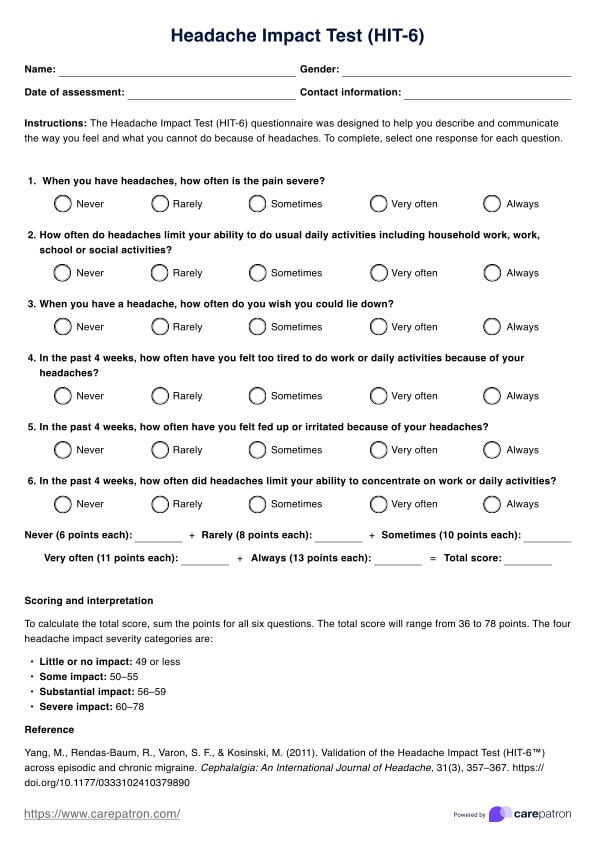The HIT-6 is scored from 36 to 78 points, with higher scores indicating a greater impact of headaches on a patient's life. Scores are categorized into four levels of impact severity into the following: with little or no impact (≤49 points), some impact (50-55 points), substantial impact (56-59 points), and severe impact (≥60 points).

Headache Impact Test (HIT-6)
Access a guide on how to use the Headache Impact Test (HIT-6) to help assess the impact of headaches among patients.
Headache Impact Test (HIT-6) Template
Commonly asked questions
Headaches, particularly chronic and severe forms like migraines, can significantly impact various aspects of a patient's life, including work productivity and performance, social functioning and relationships, leisure activities, and quality of life.
Diagnosing headache disorders is primarily based on a thorough medical history and physical examination. Healthcare providers may perform basic tests such as a neurological exam, blood tests, and imaging tests to help diagnose the type of headache.
EHR and practice management software
Get started for free
*No credit card required
Free
$0/usd
Unlimited clients
Telehealth
1GB of storage
Client portal text
Automated billing and online payments











